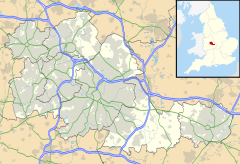
A windmill is a structure that converts wind power into rotational energy using vanes called sails or blades, by tradition specifically to mill grain (gristmills), but in some parts of the English-speaking world, the term has also been extended to encompass windpumps, wind turbines, and other applications. The term wind engine is also sometimes used to describe such devices.

Mount Pleasant Mill is a windmill north of Kirton in Lindsey on the North Cliff Road in North Lincolnshire in the east of England.
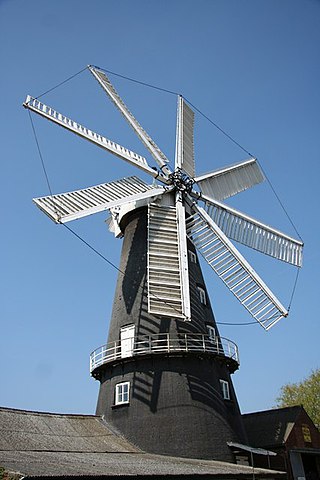
Heckington Windmill is the only eight-sailed tower windmill still standing in the United Kingdom with its sails intact.

Alford Windmill is a five-sailed windmill in Alford, Lincolnshire and the only surviving windmill out of four. Though the windmill has been restored to working order, it no longer supplies flour for sale.
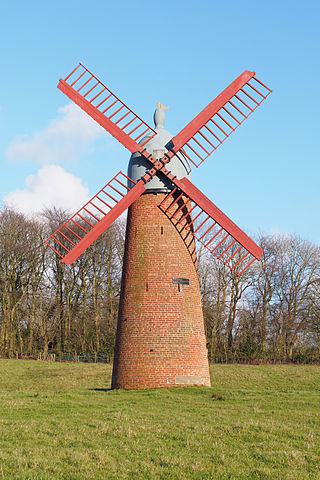
A tower mill is a type of vertical windmill consisting of a brick or stone tower, on which sits a wooden 'cap' or roof, which can rotate to bring the sails into the wind.
The Clayton Windmills, known locally as Jack and Jill, stand on the South Downs above the village of Clayton, West Sussex, England. They comprise a post mill and a tower mill, and the roundhouse of a former post mill. All three are Grade II* listed buildings.

Moulton Windmill in the Lincolnshire village of Moulton, between Spalding and Holbeach is a restored windmill claimed to be the tallest tower mill in the United Kingdom.

Shirley Windmill is a Grade II listed tower mill in Shirley, in the London Borough of Croydon, England which has been restored to working order.

Denver Windmill is a Grade II* listed tower mill at Denver, Norfolk, England. In March 2010, there were about 374,000 list entries of which 5.5% were Grade II* and even fewer were superior.

Knowle Mill, better known today as Bembridge Windmill, is a Grade I listed, preserved tower mill at Bembridge, Isle of Wight, England.

Bidborough Mill is a Grade II listed, house converted tower mill west of Bidborough, Kent, England. It is now incorporated into a housing development called Mill Court, on the south side of the B2176 Penshurst Road.
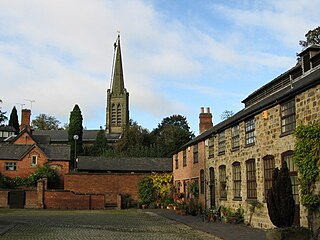
Riddings is a large village in Derbyshire, England. The appropriate ward of the Amber Valley Council is called Ironville and Riddings. The population of this ward as at the 2011 census was 5,821. It is located 2 miles (3 km) south of Alfreton near the hamlet of Golden Valley. The name derives from Ryddynges, a clearing or riding in a wood. This was the ancient forest known as Alfreton Grove within the manor of Alfreton. The settlement goes back at least to the 12th century, when Hugh de Ryddynges received half of the manor of Riddings and half of Watnall from his relative Ralf Ingram of Alfreton.

Stone Cross Windmill is a grade II* listed tower mill at Stone Cross, East Sussex, England which has been restored and is open to the public. The mill was also known as Blackness Mill and the White Mill.
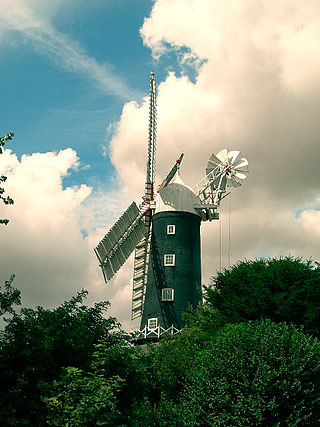
Skidby Windmill is a Grade II* listed windmill at Skidby near Beverley, in the East Riding of Yorkshire, England.

Ashby's Mill, often referred to as Brixton Windmill, is a restored grade II* listed tower mill at Brixton in the London Borough of Lambeth. The mill was in Surrey when built and has been preserved.

Thelnetham Windmill, also known as Button's Mill is a Grade II* listed tower mill constructed of brick. The windmill is located at Thelnetham, Suffolk, England. It was built in the early nineteenth century to grind wheat into flour. Thelnetham windmill worked by wind power until 1924, latterly on two sails, after which it became derelict.

Pakenham Mill is a Grade II* listed tower mill at Pakenham, Suffolk, England which has been restored and is maintained in working order.

Holgate Windmill is a tower mill at Holgate in York, North Yorkshire, England which has been restored to working order.
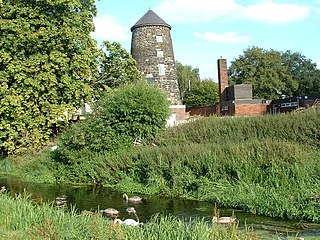
The Broad Eye Windmill is an historic windmill in the county town of Stafford, Staffordshire, England. The windmill is currently home to Windmill Broadcasting, and is looked after by the Friends of Broad Eye Windmill.

The Lily, also known as The Lily Dutch Windmill, is a tower mill located near the towns of Amelup and Borden in the Great Southern region of Western Australia. It is one of Australia's few working traditional windmills.

